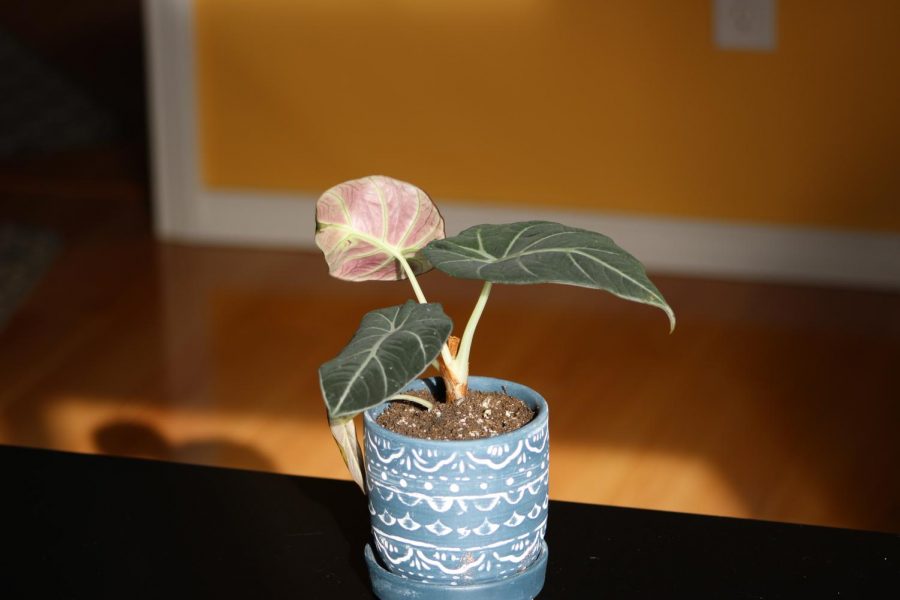Scary world of Alocasias
Plant of the week: Alocasia; lots of trial and error, beautiful textured leaves
Alocasia black velvet has thick, velvet like leaves that harden as they age.
February 11, 2021
Welcome back, plant friends. This week, I thought we’d dive into somewhat uncharted territories for me: alocasias.
I don’t know an awful lot about these plants, I got one back in September, but it went dormant pretty fast. I got my second one two weeks ago. The second one is still alive, thank goodness.
These plants are stunning; each variety has different textured leaves and colors. I own the Alocasia polly, aka my dormant stub, and the Alocasia black velvet. The polly has long, shiny leaves, while the black velvet has dark, thick, velvety leaves.
Alocasias, if not in perfect condition, go dormant, in case I haven’t said it enough. Basically, the leaves will turn yellow and fall off. They are still alive, but they’re just tubers in the soil. You still have to care for them, but lower watering and increase lighting.
These plants, from my trials and research, require high humidity and lots of light. I have my black velvet set up next to my humidifier between a lot of plants. The cool thing about plants is the closer they are set up together, the more humidity is created.
Polly is set up in an east window, so she gets a lot of natural light. I mist her twice a day to add some humidity to the air. The black velvet is set up in a north-facing window, but I added some grow lights to supplement their needs.
Watering wise, I water my black velvet about once a week, letting the top inch or so of soil dry out. I have a really warm home, set to a high 74. With that heat, I do have to water more than the average person. In the summer, watering is increased a lot more, as their needs are being fulfilled faster.
The polly does not get watered as much, because, again, she is dormant. I water it about once every two weeks to prevent root and stem rot. Yellowing leaves are a big sign that they are waterlogged. The best way to dry out the soil is to stick a tampon into the soil to absorb excess water.
Alocasias do not propagate by leaves, you have to dig out a tuber and plant it into a different pot.
This is just basic information, as I am still learning about these plants. But I must be doing something right as my black velvet did unfurl two leaves since I purchased her. If she dies, alocasias will be added to my “I give up on all these plants and will never try again” list.









